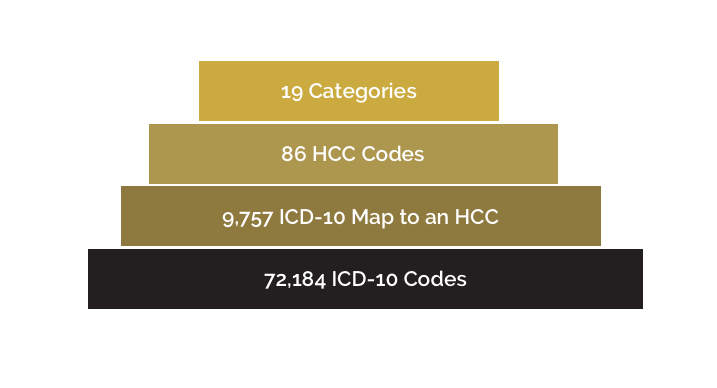Medical Record Documentation Tips
To support accurate documentation and coding, healthcare organizations should make sure to address the acronym MEAT in the medical record for every patient encounter, which stands for:
- Monitoring the patient’s symptoms and any signs of disease progression or regression
- Evaluating the patient’s response to medication and treatment
- Assessing ordered tests and reviewing patient records
- Treating a patient’s symptoms with medications and therapies
Since every diagnosis reported must be documented with an assessment and plan of care for treatment, documenting the entire MEAT process in the patient’s medical record is important for accurate risk scoring and compliance.

Educating your physicians and coders on best practices will help ensure accurate data and appropriate reimbursement. Essentially there are two important aspects of HCC coding: analyzing the physician’s documentation to identify reportable conditions, and accurately assigning codes to these conditions. Some best practices include ensuring your provider’s document:
- All cause-and-effect relationships (i.e., linking complications related to a disease/injury)
- All current diagnoses as part of the current medical decision-making process for every visit
- All diagnoses that receive care and management during the encounter, including notes on chronic conditions at every visit if the patient receives treatment and care for the condition
- Only include “history of” or “past medical history (PMH)” diagnoses when they no longer exist and are resolved
Once documentation is complete, organizations should ensure their HCC coding professionals are following the Official Guidelines for Coding and Reporting from CMS. The guidelines provide direction for many of the coding issues that risk adjustment coding professionals struggle with. Many progressive organizations use a concurrent review process, where coders review documentation and diagnosis/HCC codes coming out of an EMR to ensure the diagnosis/HCC codes are supported. This process ensures accurate and appropriate HCC codes are included on the initial claim sent to the payer.
For value-based care models to be successful, providers and coding professionals need to focus on what they do best. While providers deliver excellent, quality care supported by thorough documentation, coders have the expertise to map those notes to the proper diagnosis codes by following the CMS guidelines. Doing so not only helps healthcare organizations provide a quality patient experience, but it also ensures the organizations receive proper reimbursement for the care provided.
Healthcare organizations may benefit from solutions that automatically review diagnosis codes coming out of the EMR to ensure correct HCC codes are captured. Technologies such as these enable you to efficiently integrate concurrent HCC coding review into your existing fee-for-service coding review process. Contact us to learn more.
CONNECT WITH US
Physicians and hospitals nationwide trust AccuMedChart for their medical billing and coding needs. Talk to an advisor and learn why.
